Windows includes a built-in Administrator account, sometimes referred to as the Super Administrator account, which is often targeted by computer hackers and malware with malicious intent. It may, therefore, be a good idea to rename this Administrator account in your Windows 11/10/8/7 system. In this article, we will show you how to rename the built-in Administrator account on your Windows computer.
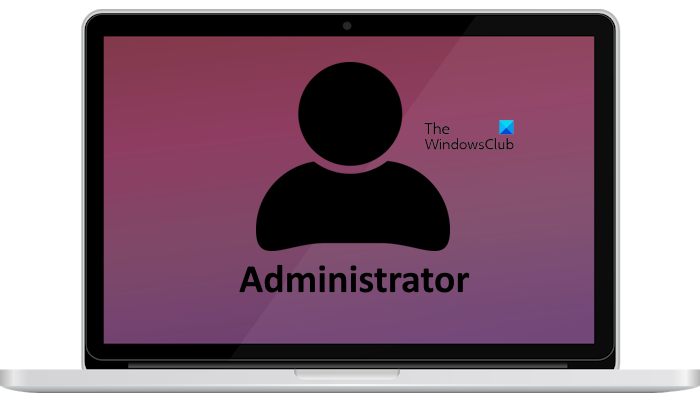
Rename Administrator Account in Windows 11/10
If you wish to rename the built-in Administrator account on your Windows 11/10 computer, you can use any one of these methods:
- Computer Management
- Control Panel
- Local Group Policy Editor
- Command Prompt
- Free tool to rename user account
Let’s see all these fixes in detail.
1] Computer Management
Press the Win + X keys or right-click on the Windows Start button. Now, click on the Computer Management option to open the Computer Management console. Expand the Local Users and Groups branch on the left side and then select the Users option. Now in the middle pane, select and right-click on the administrator account you wish to rename, and from the context menu option, click on Rename. You can rename any Administrator account this way.
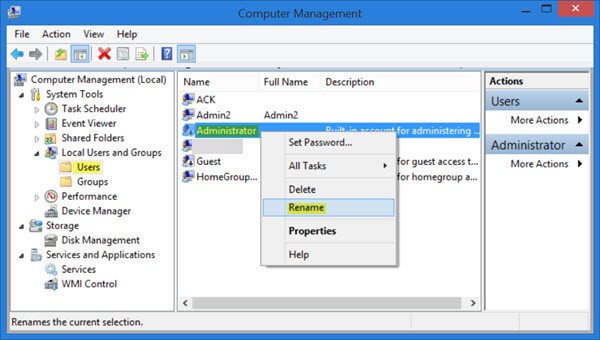
Some of you may find the Local Users and Groups branch missing in the Computer Management. In such a case, we suggest you check your Windows Edition. The Local Users and Groups option is not available in Windows 11/10 Home Edition. Therefore, Windows 11/10 Home users can skip this method of renaming the built-in Administrator account.
However, if you have Windows Pro, Enterprise, or Server edition and the Local Users and Gropsoption is missing in the Computer Management, you can try some fixes, like rolling back the latest Windows Update, performing the System Restore, etc.
2] Control Panel
The option to rename the hidden Administrator account is not available on the accounts page in the Control Panel. However, you can still rename the built-in Administrator account via the Control Panel applet.
To open this Control Panel applet, use the Run command box. Press the Win + R keys to open the Run command box and type Control UserPasswords2 or netplwiz. After that, click OK. Both of these commands will open the same User Accounts window.
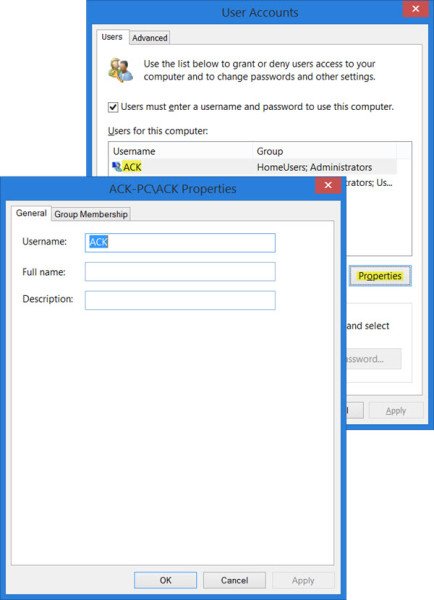
Under the Users tab, select the username and click on the Properties button. You will be able to rename it under the General tab. After renaming the Administrator account, click Apply and then click OK to save the changes. Now, click OK to close the User Accounts window. This method will let you rename an Administrator account that is active and enabled.
3] Local Group Policy Editor
You can also rename the hidden Administrator account in Windows 11/10 via the Local Group Policy Editor. The Local Group Policy Editor is not available in Windows 11/10 Home editions. Therefore, Windows 11/10 Home users can skip this method. There is a way to enable the Local Group Policy Editor on Widows 11/10 Home editions.
If your Windows OS has the Group Policy Editor, do the following. Run gpedit.msc to open the Local Group Policy Editor. Next, navigate as follows: Computer Configuration > Windows Settings > Security Settings > Local Policies, and select Security Options
Find Accounts: Rename administrator account, and double-click on it.
This security setting determines whether a different account name is associated with the security identifier (SID) for the account Administrator. Renaming the well-known Administrator account makes it slightly more difficult for unauthorized persons to guess this privileged user name and password combination.
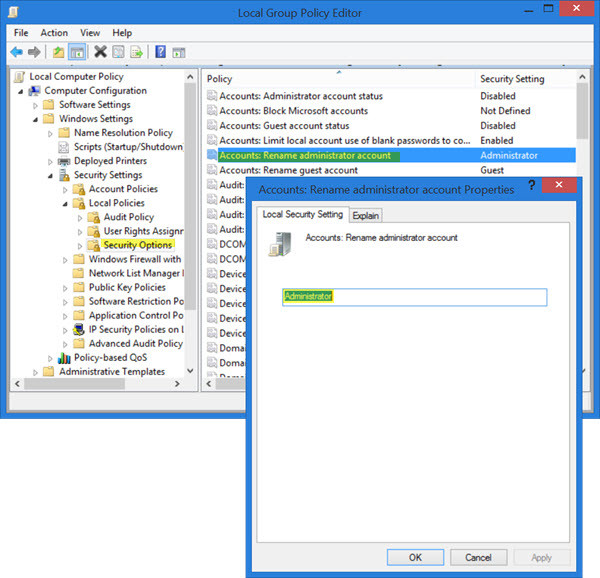
In the configuration box which opens, under the Local Security Setting tab, you will be able to rename the Administrator in the text box. Click Apply > OK and Exit. Using this method you will be able to rename the built-in Administrator account. You may have to restart your computer for the changes to take effect.
4] Command Prompt
You can also use the command line to rename the admin account. Open an elevated Command Prompt window and use the following command for WMIC utility, replacing CustomAdminname with your desired name.
wmic useraccount where name='Administrator' call rename name='CustomAdminName'
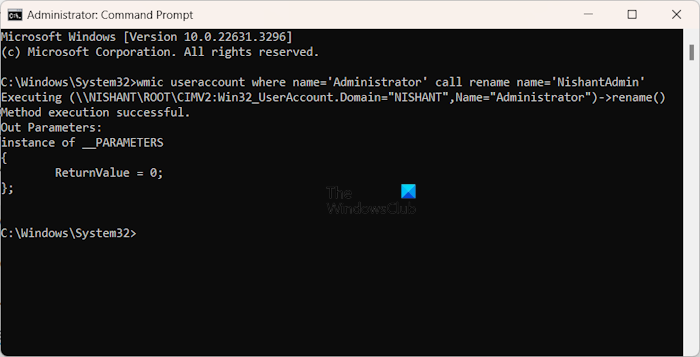
The above command will rename the built-in Administrator account. After the successful execution of the above command, you will see the following message in the Command Prompt:
Method execution successful.
5] Free tool to rename user account
You can also use free tools to rename your user account. For example, RenameUser. It is a free tool that will help you rename administrator accounts.
Since it is the administrator user account you will be dealing with, please be careful when you rename it. If need be, make a note of the new name and password on a piece of paper.
That’s it. I hope this helps.
How do I change my default account name in Windows 11?
You can change the default account name in Windows 11 via the Control Panel. Open the Control Panel and go to the User Accounts page. Now, click on the Change your account name link. If you cannot rename your user account through this method, you can rename it in your web browser by logging into your Microsoft account. After signing in to your Microsoft account in your web browser, click Your info and then click on the Edit name link.
How do I change my local account?
If you want to change your local account into the Administrator account and vice versa, you can do so in many ways, like via the Control Panel, Windows 11/10 Settings, etc.
Read next: Error 0x800b0109, Cannot add a user in Windows.
It says windows 10, it helps windows 8 users
“4] You can also use the command line to rename the admin account. Open an elevated command prompt window and use the following command for WMIC utility, replacing CustomAdminname with your desired name.
wmic useraccount where name=’Administrator’ call rename name=’CustomAdminName'”
Could you translate it for a human language?